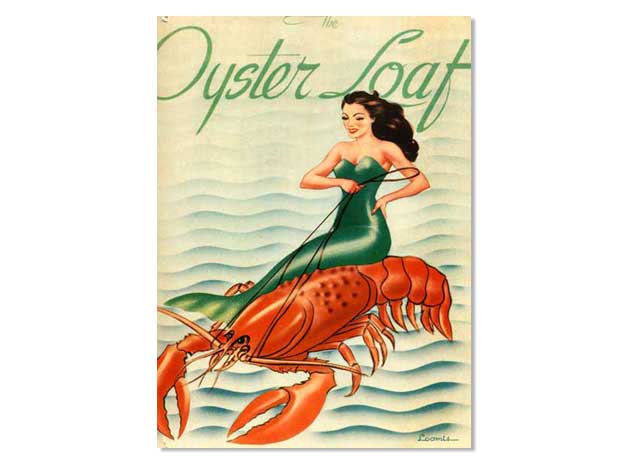The Oyster Loaf:
 “It Is a Pleasant means of Warding Off a Certain Lecture” From The New York World (1893)
“It Is a Pleasant means of Warding Off a Certain Lecture” From The New York World (1893)
When the New Orleans man returns from making a night of it “with the boys” he provides himself with what is known as a peacemaker and carries it home under his arm. The peacemaker is also known as an oyster loaf and it is the chief product of certain hostelries called oyster saloons. The manufacture of the oyster loaf is described in this fashion: A box shaped loaf of bread is taken – one that has a thick, firm curst – and the top crust is cut off so as to form a cover. Then the inside is hollowed out with a knife made for that purpose until a wall of the snowy interior remains about half an inch in thickness. It is done so neatly that the pastry-box looks as if it had been lined with white velvet. Into this piping-hot fried oysters are packed until the loaf is full and then the cover is tied on with a white ribbon. When the whole has been wrapped in paper the buyer flees as a bird to his home. The little difficulty with the keyhold overcome, he steps into the awful presence undismayed. There she stands, grim as ol yore, but without an apologetic word the erring one climbs slowly up the stair and holds forth the peacemaker. She takes it, puts down the lamp and removes the cover. The deliciously flavored steam ascends like sweet incense until it reaches her rigid nostrils, and then her stern features relax into something like a smile. While her lord is banging his shoes on the chandelier and depositing his hat carefully in the washbasin, she sits on the side of the bed eating the spoils of domestic war. There are no promises to go unfulfilled and become the cause of future bitterness. With oil thus turned on the waves of life’s troubled sea the ark sails bravely on.

